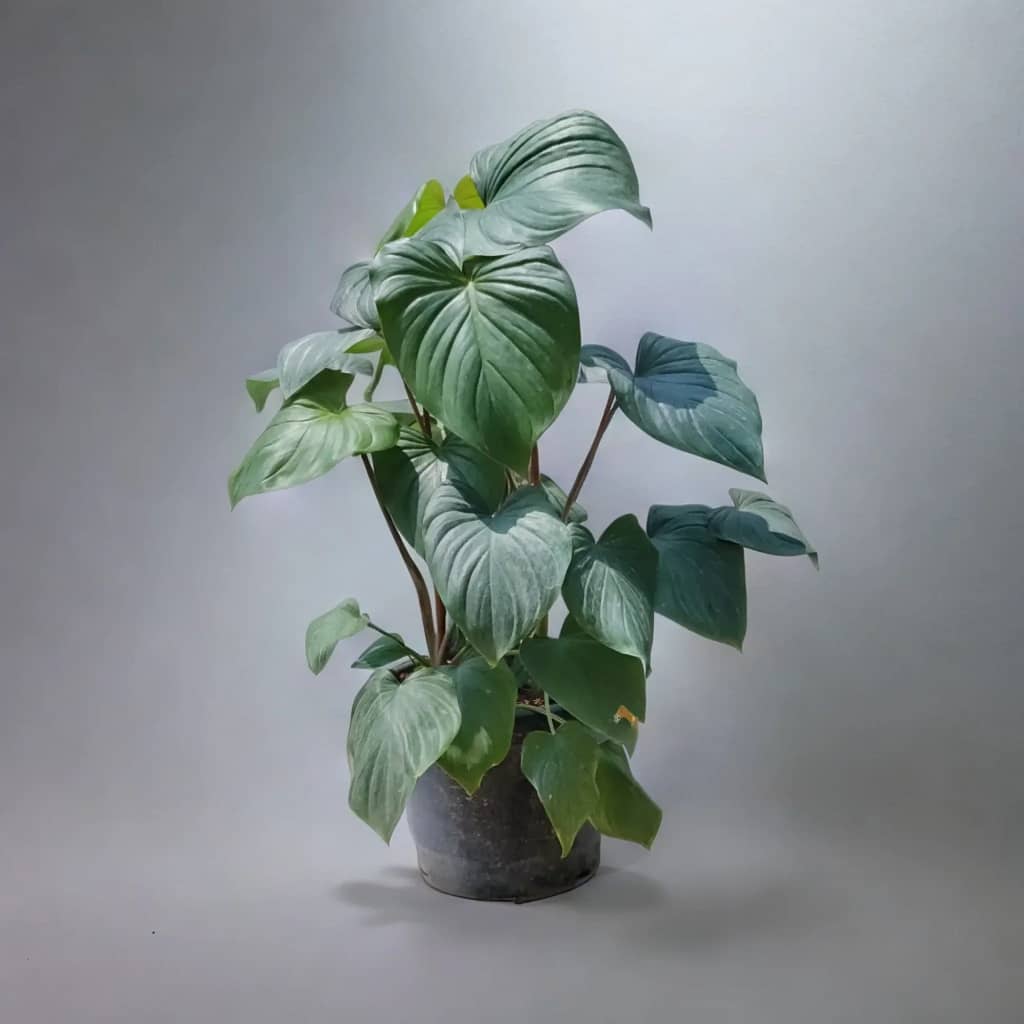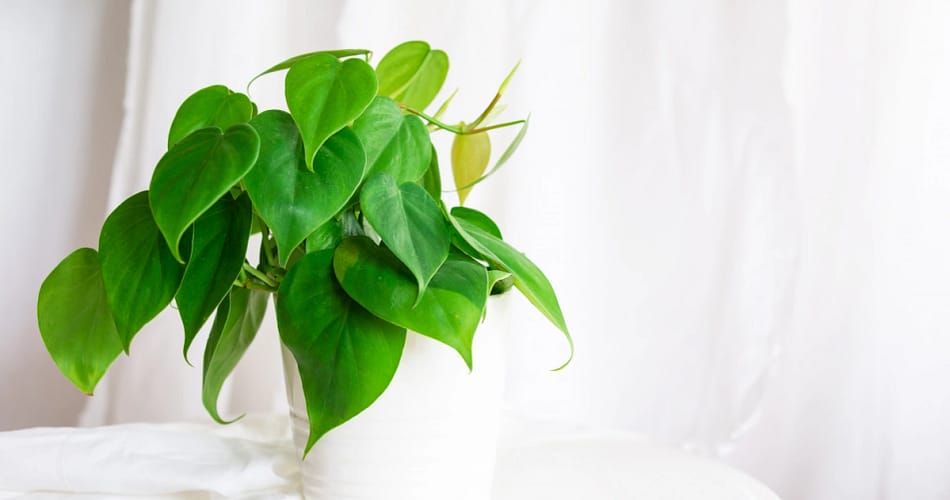What is a Philodendron plant?
A Philodendron plant is a popular houseplant known for its attractive and varied foliage, easy care, and adaptability to indoor environments. Belonging to the Araceae family, Philodendrons are native to the tropical regions of the Americas. They are characterized by their large, glossy leaves, which can be heart-shaped, split, or deeply lobed depending on the species.
Philodendrons are typically divided into two main types: vining and non-vining. Vining Philodendrons, such as the Philodendron hederaceum (Heartleaf Philodendron), are climbers that can be trained to grow on supports or left to trail from hanging baskets. Non-vining varieties, like the Philodendron bipinnatifidum (Split-Leaf Philodendron), grow upright and form large, bushy plants.
These plants are not only aesthetically pleasing but also beneficial for indoor air quality. They are known to help filter toxins from the air, making them a great choice for home and office environments. Philodendrons thrive in a range of lighting conditions, from low to bright indirect light, and prefer consistently moist but well-draining soil. Due to their resilience and minimal care requirements, Philodendrons are ideal for both beginner and experienced plant enthusiasts.
How Do I Care for a Philodendron Plant?
Caring for a Philodendron plant is relatively straightforward, making it a great choice for both beginners and experienced plant enthusiasts. Here’s a comprehensive guide to ensure your Philodendron thrives:
1. Light
Philodendrons thrive in bright, indirect light but can also adapt to low light conditions. It’s important to avoid direct sunlight, as it may cause leaf scorching. For optimal growth, place your Philodendron near a window with filtered light.
2. Water
To maintain your Philodendron’s health, water it when the top inch of soil is dry to the touch. Ensure the soil drains well to prevent root rot caused by overwatering. In the growing season (spring and summer), water more frequently, and reduce watering in the dormant season (fall and winter).
3. Humidity
Philodendrons thrive in high humidity but can adapt to average indoor humidity levels. To increase humidity, mist the leaves regularly, use a humidifier, or place the plant on a tray filled with water and pebbles.
4. Temperature
Maintain indoor temperatures between 65-80°F (18-27°C). Avoid exposing the plant to cold drafts or sudden temperature changes, as Philodendrons prefer a stable, warm environment.
5. Soil
Use a well-draining potting mix to prevent waterlogging. A mix of peat, perlite, and regular potting soil works well.Make sure the pot has drainage holes so that any excess water can drain away.
6. Fertilizer
During the growing season, nourish your Philodendron with a balanced liquid fertilizer every 4-6 weeks. Dilute the fertilizer to half its recommended strength to prevent over-fertilization, which can harm the plant.
7. Pruning
To keep your Philodendron looking tidy, prune it regularly to control its shape and size. Remove any dead or yellowing leaves, and trim back leggy or overgrown stems using clean, sharp scissors or pruning shears. Make sure to make cuts just above a leaf node for optimal growth.
8. Repotting
Repot your Philodendron every 1-2 years or when it outgrows its current pot. Select a container that is 1-2 inches larger in diameter than its current one. Refresh the potting mix and carefully transfer the plant to its new container for continued healthy growth.
9. Pests and Diseases
Common pests include spider mites, aphids, and mealybugs. Regularly inspect your plant and treat infestations with insecticidal soap or neem oil. Make sure good quality air circulation to prevent fungal diseases, and avoid overwatering to prevent root rot.
10. Propagation
You can propagate Philodendrons easily using stem cuttings:
- Select a healthy stem with at least two nodes.
- Place the cutting in water or directly into moist soil.
- Keep the cutting in a warm, well-lit area, and roots should form within a few weeks.

Why are the leaves turning yellow?
Yellowing leaves can be caused by overwatering, underwatering, or poor lighting conditions. Check the soil moisture and light levels, and adjust accordingly. Ensure the plant is not exposed to cold drafts or temperature fluctuations, “Philodendron leaves turning yellow.
Do Philodendrons flower indoors?
Philodendrons rarely flower indoors. They are primarily grown for their attractive foliage rather than their flowers, “Philodendron flowers indoors.
How do I increase humidity for my Philodendron?
To boost humidity for your Philodendron, you can mist its leaves regularly, position a humidifier nearby, or place the plant on a tray filled with water and pebbles. Grouping multiple plants together can also enhance humidity levels effectively.
Are Philodendrons toxic to pets?
Yes, Philodendrons are toxic to pets and humans if ingested. They contain calcium oxalate crystals, which can cause irritation and swelling of the mouth and throat. Keep them out of reach of children and pets, “Philodendron toxicity to pets.
Philodendron Plant: Countrywise Names
Philodendron plants are known by different names around the world, depending on the local language and cultural context. Here are some common names for Philodendrons in various countries:
1. United States & United Kingdom
- Philodendron
2. Spain
- Filodendro
3. France
- Philodendron
4. Germany
- Baumfreund (literally “Tree Friend”)
5. Italy
- Filodendro
6. Brazil
- Filodendro
7. Japan
- フィロデンドロン (Firodendoron)
8. India
- फिलोडेन्ड्रोन (Philodendron) – Hindi
- ফিলোডেন্ড্রন (Philodendron) – Bengali
- ఫిలోడెండ్రాన్ (Philodendron) – Telugu
9. Russia
- Филодендрон (Filodendron)
10. South Korea
- 필로덴드론 (Pillodeondeuron)
11. Indonesia
- Philodendron
12. Thailand
- ฟิโลเดนดรอน (Philodendon)
These names reflect the widespread popularity and recognition of Philodendrons as houseplants across different cultures and languages.

